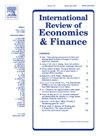日历拨备对银行策略的影响
IF 4.8
2区 经济学
Q1 BUSINESS, FINANCE
引用次数: 0
摘要
日历拨备旨在防止银行延迟确认不良贷款损失。它根据自默认分类以来所经过的时间,确定损失覆盖要求的最小百分比。本文提供了一个微观基础模型,说明日历拨备对两种银行策略的影响:主动(在杠杆约束约束下进行资本重组)和被动(在杠杆约束约束下出售不良贷款)。贷款根据几何布朗运动和泊松过程进行演化,以捕获规则执行的概率。由于银行管理不良贷款涉及不可逆决策,我们的分析使用实物期权框架。我们获得了两种策略的选项值的封闭形式的解决方案,这使我们能够校准它们的影响,关键参数的影响,并获得交付可测试命题的见解。日历拨备的可能性增加,使不良贷款销售的可能性增加,并加快了销售速度。当银行的股本成本较低或面临干预的可能性较低时,它更倾向于主动策略。银行不良贷款折旧率的增加可能会导致银行更倾向于主动而不是被动策略,从而导致不良贷款出售的可能性更低。政策含义是,虽然监管机构可以通过执行日历拨备的可能性来影响不良贷款销售,但它也必须考虑到银行的具体情况,因为股权成本和不良贷款折旧率对每家银行和每个司法管辖区都是特定的。本文章由计算机程序翻译,如有差异,请以英文原文为准。
The impact of calendar provisioning on bank strategies
Calendar provisioning aims to prevent banks from delaying the recognition of NPLs losses. It establish the minimum percentage of loss coverage requirements, based on the time elapsed since the default classification. This paper provides a micro–founded model of the impact of calendar provisioning on two bank strategies: Active (recapitalize when the leverage constraint binds) and Passive (sell NPLs when the leverage constraint binds). Loans evolve according to a Geometric Brownian Motion augmented with a Poisson process to capture the probability of rules enforcement. As banks management of their NPLs involve irreversible decisions our analysis use a real option framework. We obtain a closed-form solution of the option values of the two strategies which allows us to calibrate their impact, that of key parameters, and to obtain insights that deliver testable propositions. An increase in the probability of calendar provisioning makes NPLs sales more likely and speeds their sales up. When the bank has a low cost of equity or faces a low probability of intervention it prefers the Active strategy. An increase in the bank’s NPL depreciation rate may induce the bank to prefer the Active to the Passive strategy, leading to NPLs sales with lower probability. The policy implications are that while the regulator can affect NPLs sales via the probability of enforcing calendar provisioning, it must also take into account bank specific circumstances since the cost of equity and the NPLs depreciation rate are specific to each bank and each jurisdiction.
求助全文
通过发布文献求助,成功后即可免费获取论文全文。
去求助
来源期刊
CiteScore
7.30
自引率
2.20%
发文量
253
期刊介绍:
The International Review of Economics & Finance (IREF) is a scholarly journal devoted to the publication of high quality theoretical and empirical articles in all areas of international economics, macroeconomics and financial economics. Contributions that facilitate the communications between the real and the financial sectors of the economy are of particular interest.

 求助内容:
求助内容: 应助结果提醒方式:
应助结果提醒方式:


